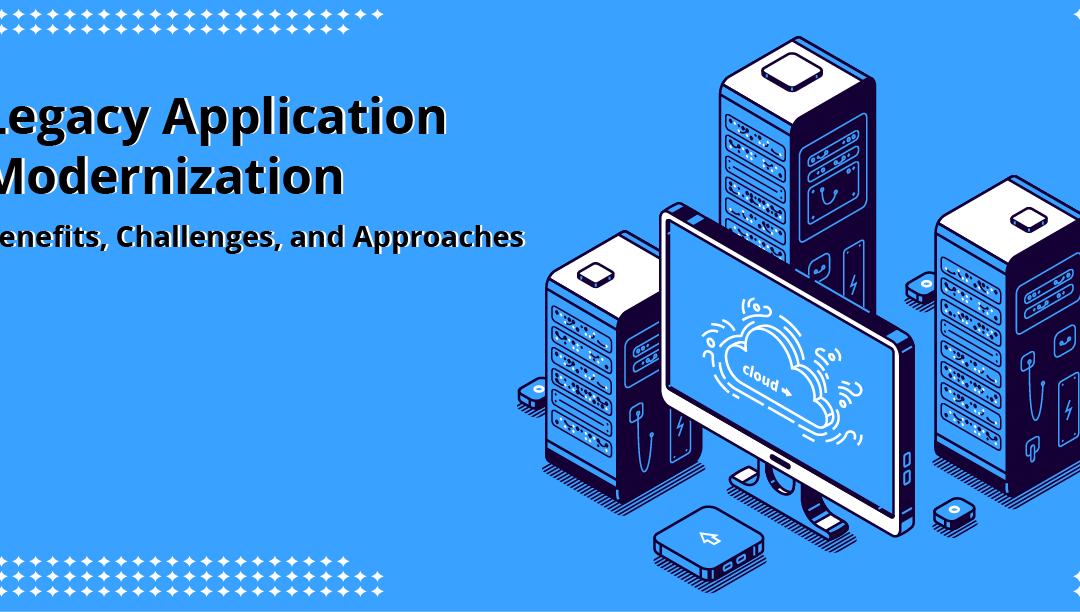To stay competitive, companies must assess their technology regularly and ensure that it is serving the needs of the organization. Legacy modernization is the process of updating and improving technologies that could be better. While there are many different approaches to legacy modernization, the best choice depends on several factors, including the specific problem that needs to be addressed. Before engaging in the legacy modernization process, organizations should conduct a full assessment of existing technology. This means looking at how the technology operates in terms of supporting business processes as well as its cost to the organization both directly and indirectly.
Business is becoming increasingly digitalized, which means that technology needs to continue evolving to keep up with new demands. Technology needs to provide significant business value to be worthwhile, so its capabilities must align with the needs of the company and help drive overall income. In addition, technology must be assessed in terms of agility, as rigid applications will eventually become a liability when they cannot shift to meet changing consumer expectations or employee needs.
In terms of organizational cost, any type of security risk must be considered to avoid breaches and potential losses. Technological complexity should also be considered because the training necessary to use the technology is an indirect cost. On the other hand, actual cost must also be considered, including whether the software is proprietary or comes with a monthly fee.
Assessing technology on these levels can help identify the specific problems that must be addressed. In turn, this information can point to the right modernization strategy. These strategies range in terms of risk and impact; two factors that must be balanced. In general, greater risk means a more significant impact on the organization.
Here are seven key strategies to consider:
- Replace—The riskiest strategy is to replace technology entirely. However, there is always the chance that the new solution will not function as expected. Plus, there can be a lot of downtime involved, which adds to the cost. Replacement is a good strategy if multiple problems have been identified in the technology. Rather than implementing smaller solutions for each issue, it may make more sense to replace the system altogether.
- Rearchitect—Instead of completely replacing a piece of technology, it may be worthwhile to make a notable change to it. One option is to change the code and move to a completely new architecture. This preserves a lot of the code while making it possible to introduce new capabilities. If the technology is mostly functional but could stand to be a little more robust, rearchitecting can be a helpful solution that saves money and reduces downtime. Of course, feasibility depends on the current architecture and the desired new capabilities.
- Rebuild—Another option along the same lines as rearchitecting is rebuilding. Rebuilding refers to a redesign or rewrite of the entire application component from scratch while keeping the specifications and scope the same. This approach is less intensive than a replacement as it provides parameters and guidance for the modernization process. However, rebuilding still allows organizations to customize an application according to current needs. This strategy is best suited for companies with technology that is agile but not necessarily aligned with what the business does as well as it could be.
- Replatform—If performance is the primary issue with an organization’s technology, replatforming may be the answer. With this approach, the code structure, functions, and features stay the same, but the application is moved to a new runtime platform. This strategy typically involves minimal change to the code and thus little downtime. Furthermore, the monetary investment is limited. Depending on how poor the technological performance currently is, replatforming can seem revolutionary. Think of it in terms of getting a new phone with the same operating system and how much faster and cleaner it works.
- Refactor—Another way to address performance is with a refactoring. This strategy involves optimizing the existing code without attempting to alter its function. By refactoring, organizations can remove some of the excess code that builds up over time and jeopardizes performance. A refactor comes with negligible risk, but the impact depends on the history of the technology. However, if the technology is fairly new and has never performed well, it is not the right approach; b if a number of updates have occurred and performance has waned over time, a refactor can be highly effective.
- Rehost—When thinking about modernization, it is important to consider accessibility. With more people working remotely, organizations may find themselves in a position to rehost. This means changing the application infrastructure, such as moving from on-site physical machines to the cloud. While everything stays the same, accessibility is vastly improved. However, this can come with some performance issues as a result, as well as new security concerns.
- Encapsulate—A final strategy to consider is encapsulation. This means taking the application and its functions and integrating it into an API, which can allow interaction with other apps at the organization or external to it. This strategy is low-cost and low-impact but can help streamline processes and make overall services more robust.

